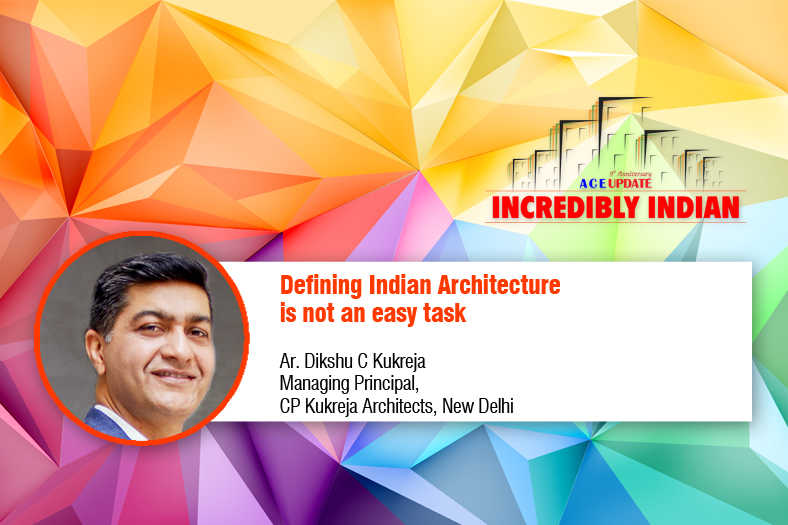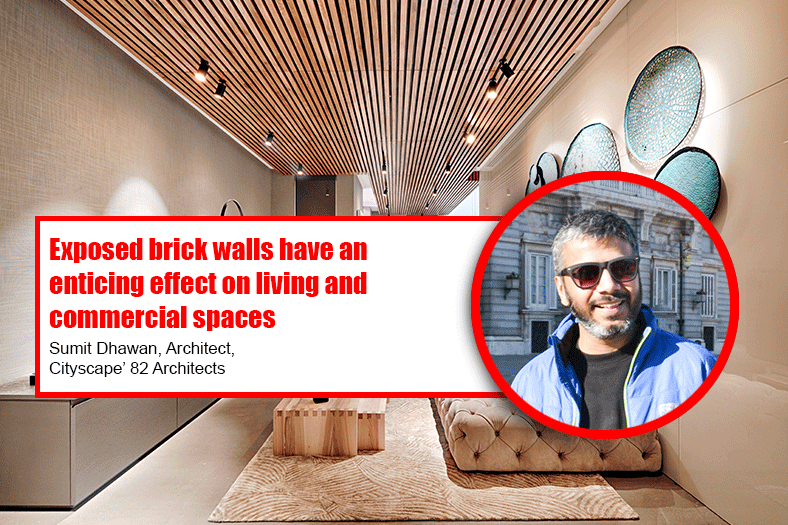Defining Indian Architecture is not an easy task

The very idea of finding our “true” style is complex because if we had to go back into our origins, we would have to revive the Indus Valley Civilization, which predates the Colonial Era, Mughal Age and even the Aryan Invasion.
Considering India in itself has a vast syntax of architecture and design, what in your opinion is the right definition for Indian Architecture and Design?
It is very difficult to define what “Indian Architecture” really is. India is a melting pot of cultures and different climatological influences, subsequently an advent of myriad of architectural design and understanding. The very idea of finding our “true” style is therefore complex, because if we had to go back into our origins, we would have to revive the Indus Valley Civilization, which predates the Colonial Era, Mughal Age and even the Aryan Invasion. Perhaps it is time for us to abandon the argument of defining what is “Indian”, learn to embrace our past as an integral part of who we are, and look to the future as we continue on this journey of evolution and re-evolution.
To me, the future of Indian architecture is not about imbibing an identity that is only skin deep. It is about architecture that is sensitive to the needs of its context- social, political, economic, and geographic. It is about creating a meaningful dialogue between the tangible and intangible aspects of the built form, and giving up superfluity for spaces that have a true impact on its surroundings.
As we get globalised day by day, are we in the midst of an identity crisis in the architecture and design sense?
India has a remarkable history of sustainable, vernacular architecture, particularly in the rural areas. These structures use passive design, local materials and respond to the site context. It is in the urban areas, unfortunately, that we see insensitivity to the environment. It has become a trend in cities to senselessly use glass, concrete and steel. However, we are slowly coming to a time where there is an increasing awareness about sustainable design. The country also seems to be witnessing exciting times with the plethora of opportunities waiting to be explored in its design and development sectors. The availability of large development areas like new cities, towns, etc. make the scope of growth through green practices an achievable feat. Additionally, this also is the perfect time to be learning through the design and development practices already implemented across the world and customize and formulate them to suit the country’s requirements in order for us to benefit the best out of them.
When it comes to traditional Indian architecture, which project in your opinion is a landmark project?
The India International Convention Centre at Dwarka is Asia’s 2nd largest state-of-the-art Convention Centre and 3rd largest in the world being designed to host the G20 Summit and other such mega International events in India along with international conferences, exhibitions and trade shows. The design is a representation of an integration between traditional architectural elements like jaalis, stepped wells, green open spaces, a lotus motif embossed on the retractable roof of the Indoor Arena, to name a few, projected with a contemporary outlook through forms and spaces at the site. The design has been conceptualised, on the whole, in a manner which would help develop the region in the long run, making sustainable development on such a scale a successful feat.
When it comes to contemporary architecture, which project in your opinion reflects the inherent ‘Indianness’ in the present timeline?
Our project – Gautam Buddha University (GBU) represents a significant turning point in the practice of the firm, not only because of its sheer scale but also for the ideology that was embodied in its design. GBU is a 500 acre campus in Greater Noida that underlined the importance of a harmonious coexistence between man and his natural surroundings. Believing this relationship as the key to fostering intellect, creativity and the dissemination of ideas, our aim was to create a “Centre of Learning” that embraces Mother Nature. The very understanding and realisation of “Enlightenment” propagated by Gautam Buddha, the “Enlightened One,” and Buddhist teachings such as the Middle Path stress on the importance of a marriage between binaries like Dhatu (matter/solid) and Shunya (antimatter/void), existence and non-existence, Bhog (consumption) and Tyag (detachment) to maintain a balance that keeps the wheel of life turning.
To imagine an environment of learning, wisdom, and creativity that would infuse a sense of cultural ethics and ecological harmony with a respect for history, it was necessary to base the design of the campus in philosophies stemming from different cultures, all of which teach humans ‘simple living and high thinking.’ The essence of this design philosophy lay in respecting both continuity and change, allying it with teaching and learning practices within the university.
How much say will technology have in the future of architecture?
The science of technology will always continue to evolve. With passing time, each new invention brings with it new challenges and ideas for architectural design, many a times leading to creation of pioneering and iconic landmarks. As Architects, it is our responsibility to see how it can be incorporated and utilised for mutually benefitting our designs and its users.
Ar. Dikshu C Kukreja, Managing Principal, CP Kukreja Architects, New Delhi
21
Cookie Consent
We use cookies to personalize your experience. By continuing to visit this website you agree to our Terms & Conditions, Privacy Policy and Cookie Policy.









